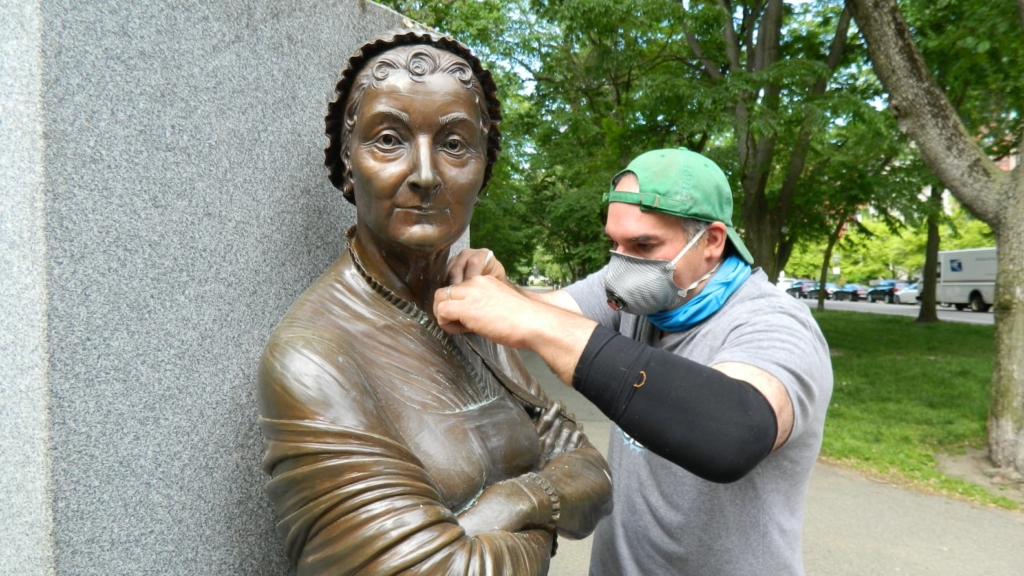
The Friends has, over time, established a strong ongoing conservation program for the 42 sculptures, tablets, plaques, and fountains we care for in the three parks. Working with Sarah Hutt, our Collections Care Manager, each year we decide on a selection of monuments to maintain in the three parks, moving through a regular cycle of conservation cleaning in order to keep each piece in good condition. The expert evaluation and subsequent conservation is paid for using funds from the Henry and Joan Lee Sculpture Endowment, hiring the best professionals to undertake the work.
This maintenance saves tens of thousands of dollars in the long run, which is the cost to restore a monument that has not been regularly conserved. It also gives a monument better defense against graffiti, particularly the bronze. For example, the bronze of the Abigail Adams statue, part of the Boston Women’s Memorial, is regularly waxed and cleaned, and therefore is protected by a healthy coating of wax. When the conservator pictured is removing spray paint graffiti, it is being removed from the wax not the bronze surface of the statue.
The graffiti on stone surfaces is more problematic. The stone surface cannot be protected easily, so to minimize the damage, we bring in our conservators immediately so they can remove the paint as soon as possible. If left, the paint becomes harder to remove and more labor intensive. The Friends’ stone conservator Ivan Myjer says, “While it is relatively easy to solubilize the paint with pressured water, it is difficult to induce the solubilized paint and pigment that has settled in the pores of the stone to come out of the stone.” Currently, we are trying to develop a method for the cleaning of spray paint that will remove the “ghosting” image that can be left behind when stone is pressure washed. Going forward we will use a two-step method: the first is to remove the alkaline chemical residue left on the stone from the pressure washing and the second phase is to remove more of the residual paint that remains in the stone pores.

